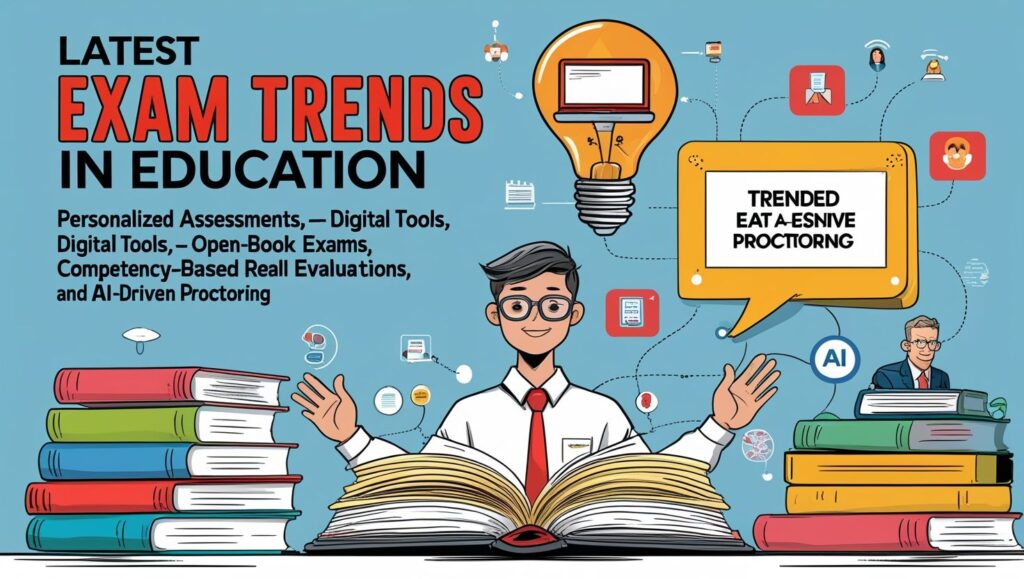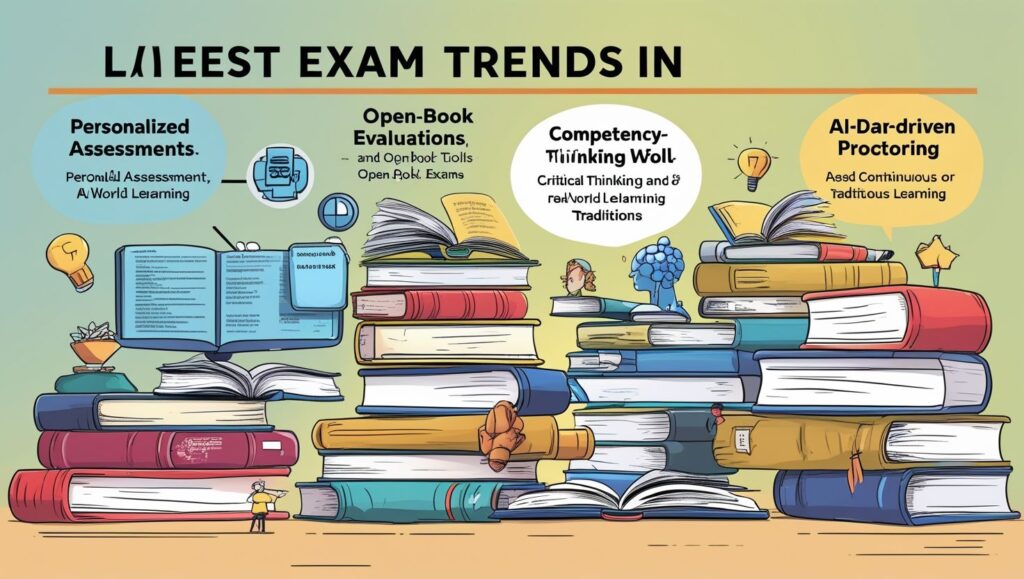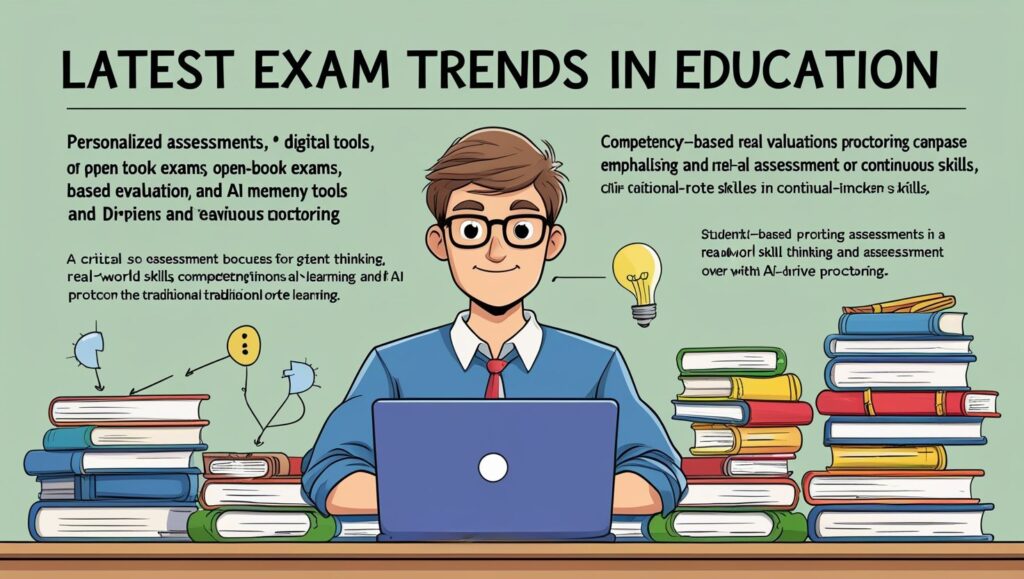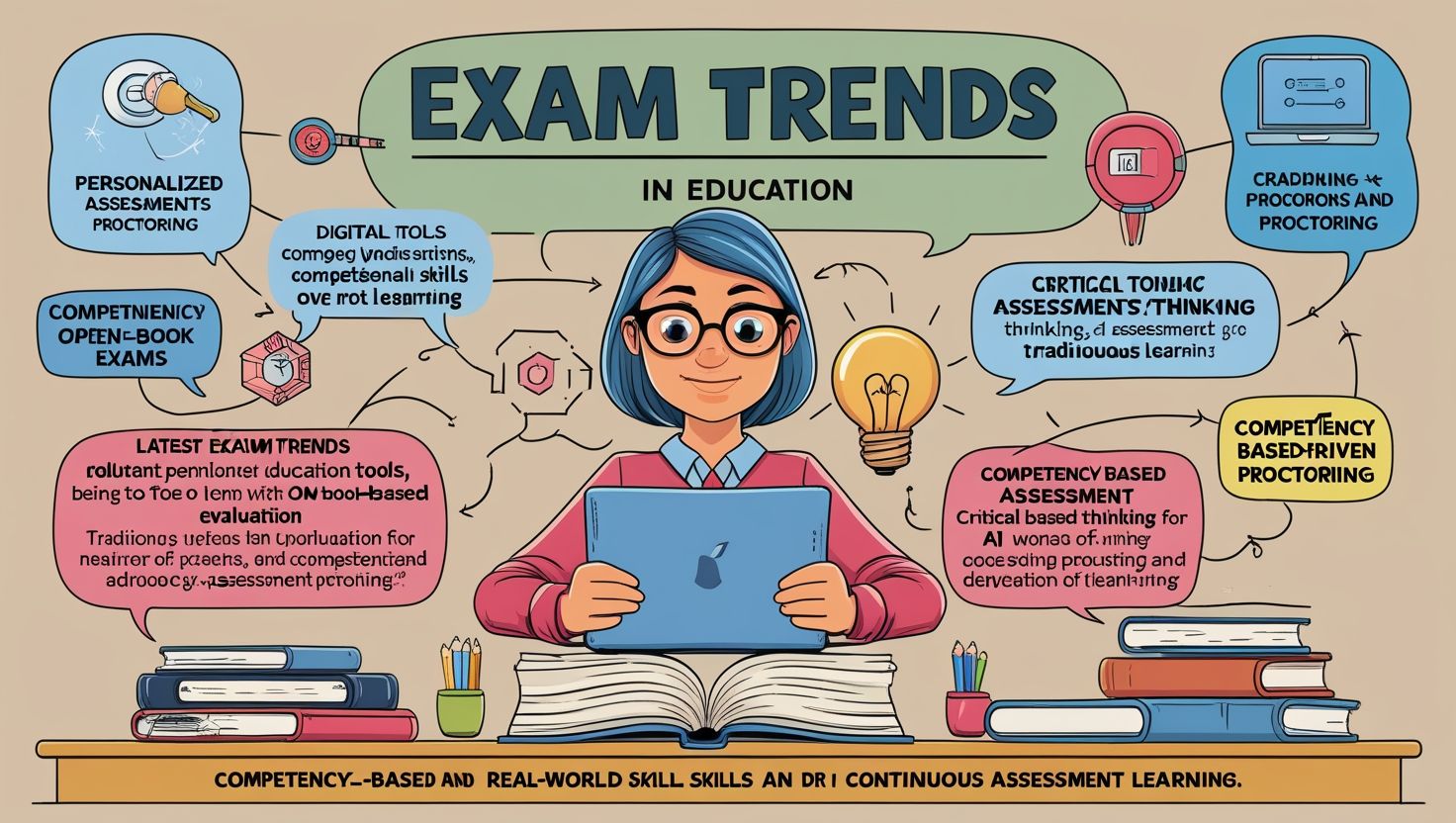Introduction
Latest Exam Trends in Education, The education sector is continuously evolving, driven by technological advancements, pedagogical research, and changing societal needs. Examinations, being a crucial part of the learning process, have also undergone significant transformations. Over the past few years, new trends have emerged, reshaping how assessments are conducted, evaluated, and utilized for student development.
This article explores the latest exam trends in education, covering technological innovations, alternative assessment methods, policy changes, and the impact of global events such as the COVID-19 pandemic.
1. Shift to Digital and Online Examinations
One of the most prominent trends in recent years is the rapid adoption of digital and online examinations. The COVID-19 pandemic accelerated this shift, forcing educational institutions to move from traditional pen-and-paper tests to computer-based assessments.
Key Developments:
- Remote Proctored Exams: AI-powered proctoring tools (like ProctorU, ExamSoft) monitor students through webcams, screen recording, and behavior analysis to prevent cheating.
- Computer-Based Testing (CBT): Standardized tests (GRE, GMAT, TOEFL) now predominantly use CBT formats for flexibility and faster results.
- Blockchain for Exam Security: Some institutions use blockchain to securely store and verify exam records, reducing fraud.
Challenges:
- Digital Divide: Not all students have equal access to devices and stable internet.
- Cheating Concerns: Despite proctoring tools, online exams still face integrity issues.

2. Adaptive and Personalized Assessments
Modern exams are increasingly moving towards adaptive testing, where the difficulty level adjusts based on a student’s performance.
How It Works:
- AI algorithms analyze responses in real-time and modify subsequent questions accordingly.
- Used in exams like the GRE and GMAT.
Benefits:
- Provides a more accurate measure of a student’s ability.
- Reduces test fatigue by avoiding overly easy or difficult questions.
3. Competency-Based Assessments Over Rote Learning
There is a growing emphasis on competency-based assessments (CBA) rather than traditional memorization-based exams.
Features:
- Focuses on practical skills, critical thinking, and problem-solving.
- Used in vocational training, medical exams (USMLE), and engineering certifications.
Advantages:
- Better prepares students for real-world challenges.
- Encourages deeper understanding rather than superficial learning.
4. Open-Book and Collaborative Exams
Many institutions are experimenting with open-book exams and collaborative testing to reflect real-life work environments.
Why It’s Gaining Popularity?
- Tests application of knowledge rather than memorization.
- Encourages teamwork and communication skills.
Examples:
- Harvard Business School uses case-based open-book exams.
- Some universities allow group discussions during assessments.
5. Micro-Credentials and Digital Badges
Instead of relying solely on traditional degrees, employers now recognize micro-credentials and digital badges earned through short courses and certifications.
How It Works:
- Platforms like Coursera, Udemy, and edX offer skill-based certifications.
- Digital badges can be shared on LinkedIn and resumes.
Impact on Exams:
- Assessments are often project-based or skill-demonstration tasks.
- Encourages lifelong learning and upskilling.

6. Gamification in Assessments
Gamified exams use game-like elements (points, leaderboards, rewards) to make assessments more engaging.
Applications:
- Language learning apps (Duolingo) use gamified tests.
- Corporate training programs incorporate quizzes with instant feedback.
Benefits:
- Increases student motivation.
- Makes learning and assessment more interactive.
7. AI and Automated Grading Systems
Artificial Intelligence is revolutionizing exam evaluations through automated grading systems.
How AI is Used:
- Essay grading (ETS’s e-rater).
- Coding assessments (HackerRank, CodeSignal).
- Plagiarism detection (Turnitin, Grammarly).
Pros & Cons:
- Faster and unbiased evaluations.
- But may struggle with subjective answers.
8. Focus on Mental Health and Reduced Exam Stress
Recognizing the negative impact of high-stakes exams, many education systems are adopting stress-reducing measures:
Initiatives:
- More frequent, low-weightage assessments instead of one final exam.
- Flexible exam schedules (Cambridge International’s option to skip exams in 2021).
- Mindfulness and counseling support for students.
9. Global Standardization of Exams
With increasing student mobility, there is a push for globally recognized exams:
- IB (International Baccalaureate) and Cambridge Assessments are widely accepted.
- PISA (Program for International Student Assessment) compares education systems worldwide.

10. The Rise of Hybrid Examinations
Post-pandemic, many institutions are adopting a blended approach:
- Some tests online, some offline.
- Combination of proctored and non-proctored assessments.
Conclusion
The latest exam trends reflect a shift towards technology-driven, skill-based, and student-centric assessments. While digital exams, AI grading, and adaptive testing are transforming the landscape, challenges like accessibility and exam integrity remain. The future of examinations lies in personalized, flexible, and competency-based models that prioritize real-world readiness over rote learning. As education continues to evolve, so will the ways we assess and validate learning.

9 thoughts on “Latest Exam Trends in Education”
Comments are closed.